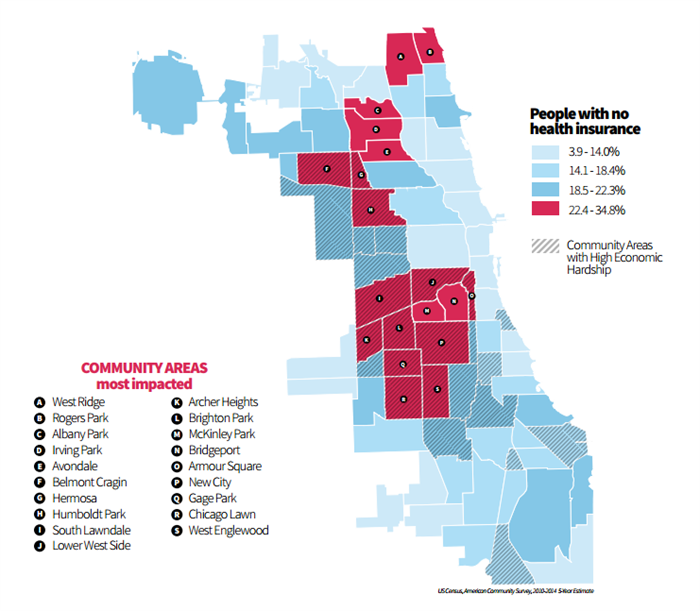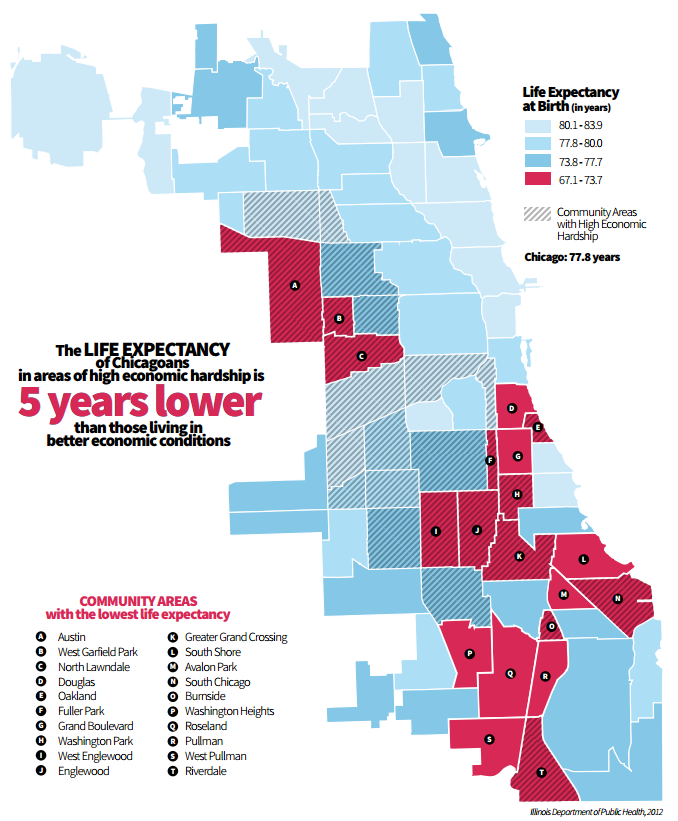
Seattle Municipal Archives (CC)
Opportunities for kids to get physical activity can be tough to find in some communities.
Would you tax yourself so your neighbors could receive mental healthcare? That’s exactly what some residents of Chicago have decided to do. In November 2016, residents of North Lawndale, East Garfield Park, West Garfield Park and the Near West Side voted to raise their own taxes. The funds gathered from the new tax will go directly toward the creation of the West Side Expanded Mental Health Services Program—a new facility that will provide mental healthcare for residents.
Why is this necessary?
In 2012, Chicago closed half of its public mental health facilities, leaving six facilities across the city. For the un- and under-insured, finding quality, affordable mental health services is tough. Too often, people without care and support end up falling into the criminal justice system. In fact, in Chicago, the largest provider of mental healthcare is Cook County Jail.
Metropolitan Planning Council is doing a study on the Cost of Segregation. We want to know how economic and racial segregation affect the health of our region, and what we can do to make us all healthier.
Left without many options, some communities have taken the mental health facilities shortage into their own hands. The West Side Expanded Mental Health Services will be the second of its kind in the city. In 2012, residents of Albany Park, Irving Park and North Park voted to create the Kedzie Center, which opened in 2014.
The cuts to public mental health services primarily affect middle and low-income patients, many of whom cannot afford insurance or whose insurance is not accepted at private facilities. Now, public clinics are few and far between, making it more difficult for those who need them to get help.
With the exception of the Near West Side, the per-capita incomes of the communities taxing themselves for mental health services are lower than Chicago’s average. These Chicagoans are taking on the cost to combat unequal access to care.

Healthy Chicago 2.0, Chicago Department of Public Health
Percentage of population without health insurance
So the quantity and location of affordable mental health services is one example of how economic and racial segregation can affect health.
Economic and racial segregation result in unequal distribution of resources across community areas and neighborhoods. These inequities lead to better health for some, and worse health for others. Public mental health clinics is one example.
But the same kind of shortage of quality, affordable care also exists when it comes to primary care providers. Nationally, there are fewer board-certified doctors in low-income and majority Black and Latino areas (Landrine & Corral, 2009). In Chicagoland, there is a shortage of primary care physicians, specialists, mental health and dental professionals available to low-income patients.
While it is crucial, access to care is not the only determinant of health. In fact, a person’s zip code is a bigger predictor of their health than their genetics. This is because the places people live and interact with are very different depending on the area of the city you’re in—whether that’s Englewood or the Gold Coast.

Healthy Chicago 2.0, Chicago Department of Public Health
Average life expectancy of residents by community area
Public health experts call these aspects of our lives the “social and built environment:” infrastructure, resources, policies and discrimination. Many of these factors are the result of planning, development and policy decisions. The results of these decisions are called “social and physical determinants of health,” outlined below. Inequalities in these determinants lead to inequalities in health outcomes.

Healthy People 2020
So what are some examples of this?
It’s more likely for lower-income Black and Latino communities to have to deal with a variety of environmental hardships that more affluent white communities don’t even consider (Landrine & Corral, 2009). For example, polluting factories tend to locate in poorer areas of the city. Housing in these areas is usually older and has a higher likelihood of lead in pipes and paint and carbon monoxide poisoning from failing heating systems.
In addition, shopping in these communities can be tough. According to the same study, across the county, majority Black neighborhoods on average have two to three times as many fast food locations as mostly white neighborhoods, and contain two to three times fewer supermarkets, regardless of income. This means people have to travel farther to get the basic essentials they need.
It’s clear that racial and economic segregation negatively affect the health of Chicagoland residents. This is why MPC is exploring the ways that our city, county and regional institutions and policies can work to improve health outcomes and counteract the negative effects of segregation.
What if neighborhoods pooled their resources to create public care facilities for everyone? The Expanded Mental Health Service taxes are an example of that. What if hospitals, universities and other institutions invested in the built environment of the neighborhoods around them?
What if equitable health outcomes were considered in all planning and policy decisions?
These are questions we’re grappling with as part of our Cost of Segregation study. Follow along as we uncover solutions!